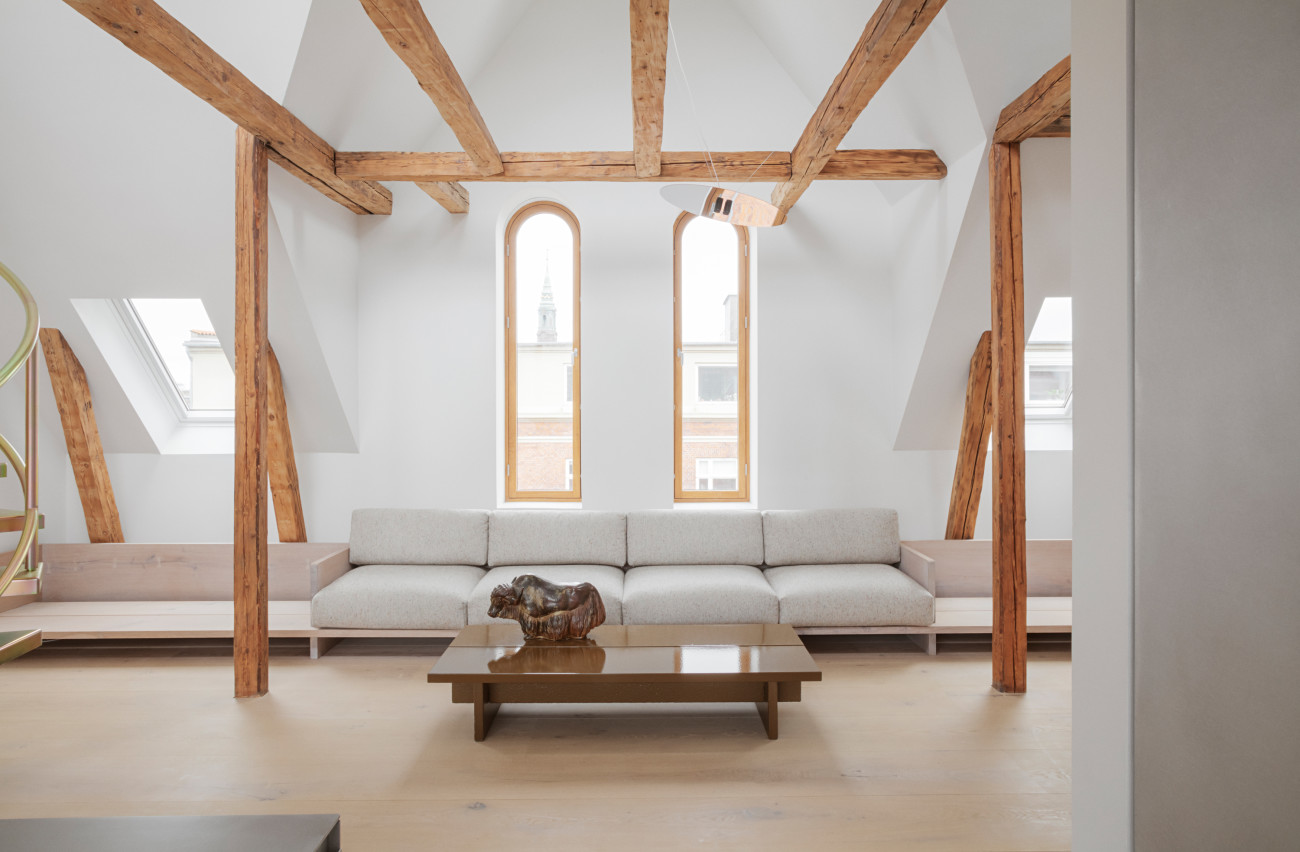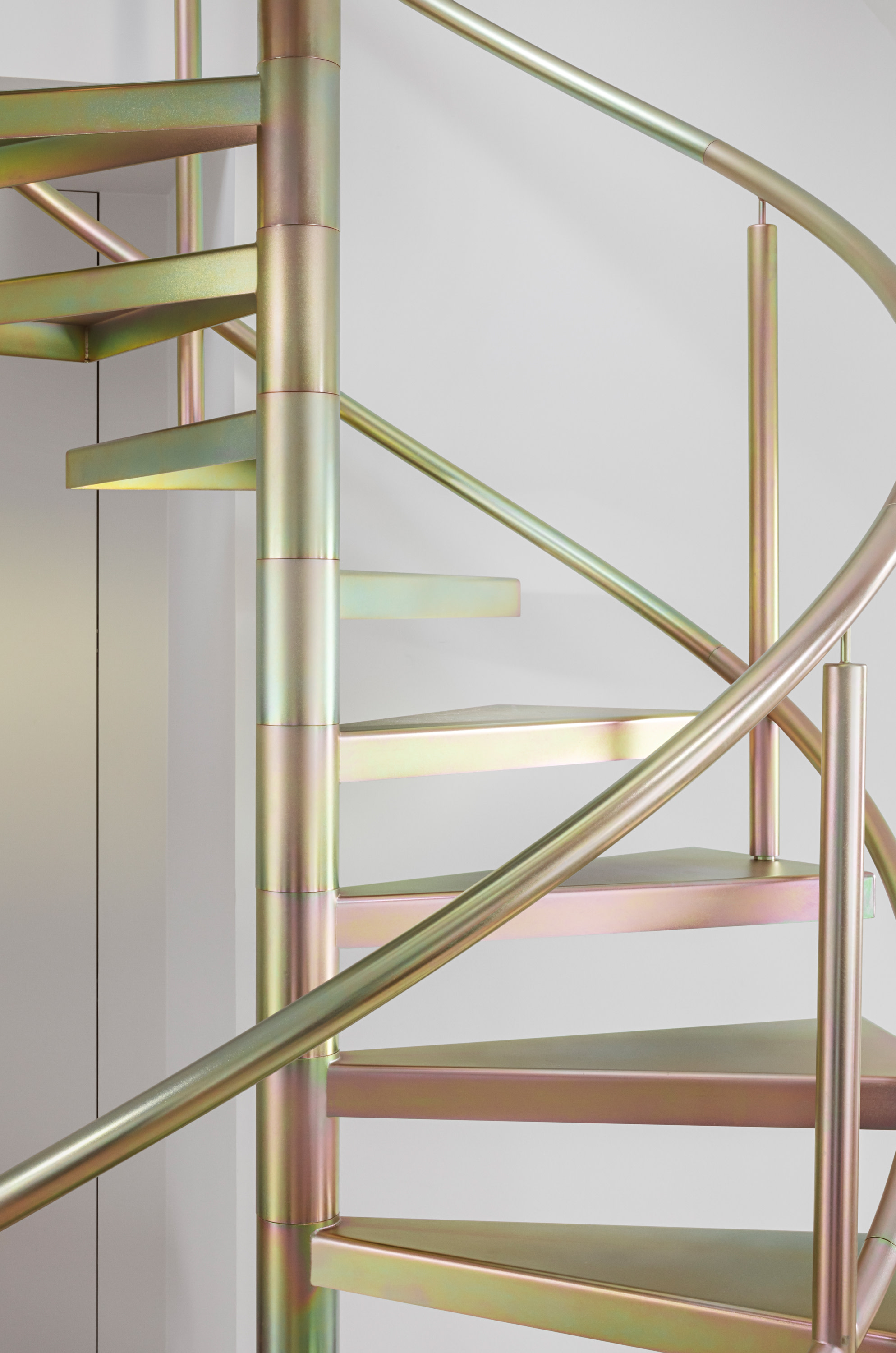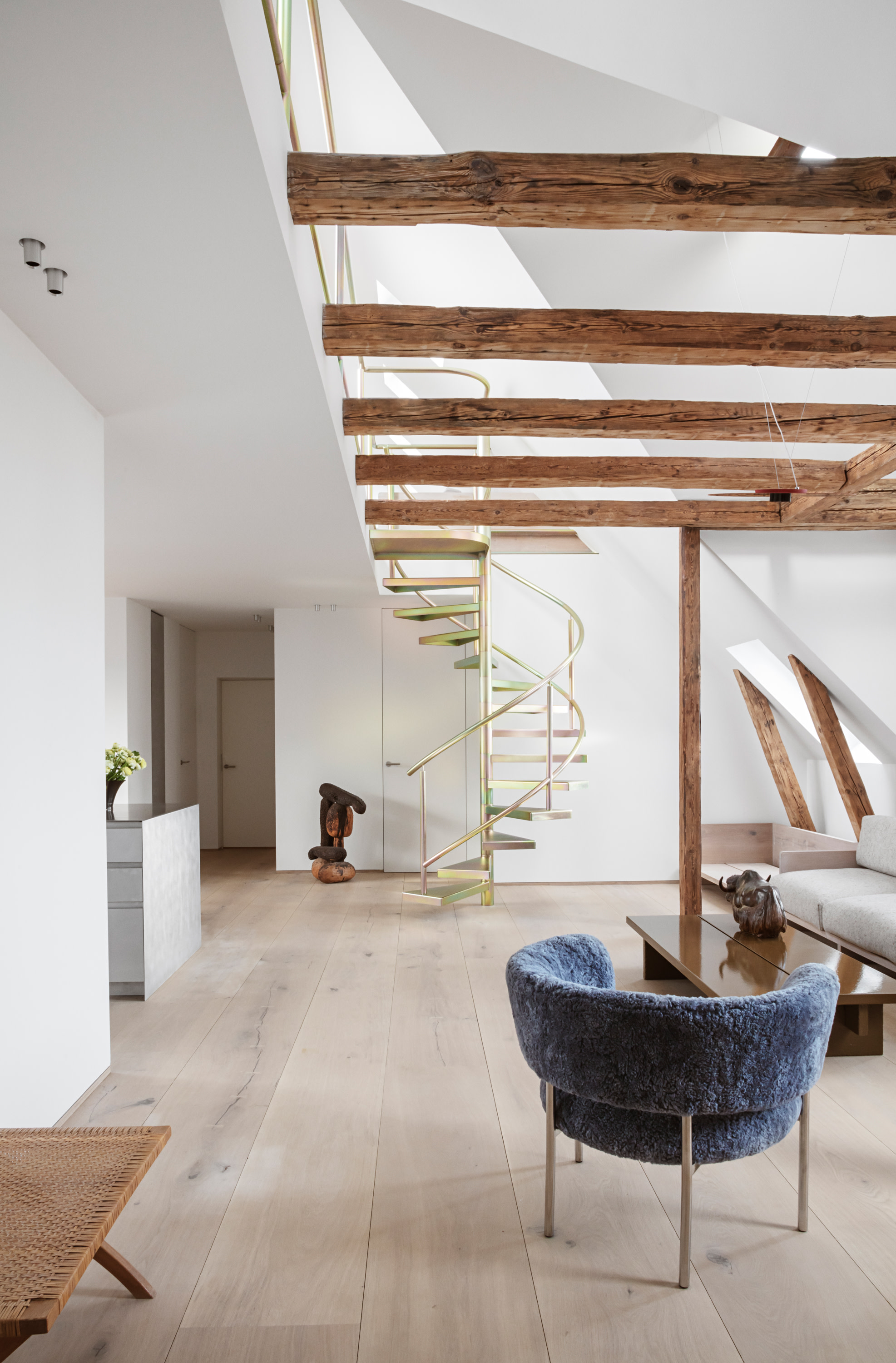
Architectural transformation of Copenhagen rooftop apartment with Dinesen HeartOak
For his latest residential project — a 150 sqm rooftop apartment of an 1890s building in the centre of Copenhagen — David Thulstrup took a point of departure in how lights affect how we feel in a place, and prioritised implementing a greater sense of space through a range of bold architectural interventions.
Residential – Copenhagen, Denmark
Architect: David Thulstrup
Photographer: Irina Boersma
_______________
HeartOak
Thickness: 30 mm. Width: 400 mm. Falling lengths: 2-5 m.
Finish: Light Oil

After experiencing Thulstrup’s interior concept for noma, the client admired the application of natural local materials such as Dinesen Heart Oak planks and Bornholm granite.



To honour the value of locality, similar materiality can be found throughout the apartment — not only for floors and walls but also for custom-made furniture that are implemented as architectural elements. The built-in sofa bench that runs the length of one wall, an in-built dining bench as well as the 200-kilogram glazed lava stone coffee table are only a few examples.


To accommodate the client’s wish for a bright and spacious home, Thulstrup focused on interventions that would support such transformation.

The owner’s acquisition of the attic space above their apartment welcomed a heroic double height living area with exposed rafters that form a sculptural connection between the two levels.
“The key architectural intervention”, Thulstrup explains, was to “intercept the pitch roof structure, extend the kitchen space and add a roof terrace that is exposed to (sun)light from morning to evening. These newly established volumes allowed all interventions to celebrate existing features, and to simultaneously inject a sense of time.”


To enhance the new sense of height, the building’s original arched windows at the centre of the living space were elongated. For bigger impact and more room for natural light, walls were adapted to extend the living space in all directions without any dividers or doors. Additionally, large bi-folding glass doors open off the combined kitchen and dining space to a second terrace which feels like an extension of the room.



As an ode to his own design principles, Thulstrup added a spiral staircase made from glass-blasted steel and a custom yellow-pated zinc finish mainly used for industrial purposes.



The stairs lead to a reading nook and the new roof terrasse with a spectacular view of the city.
